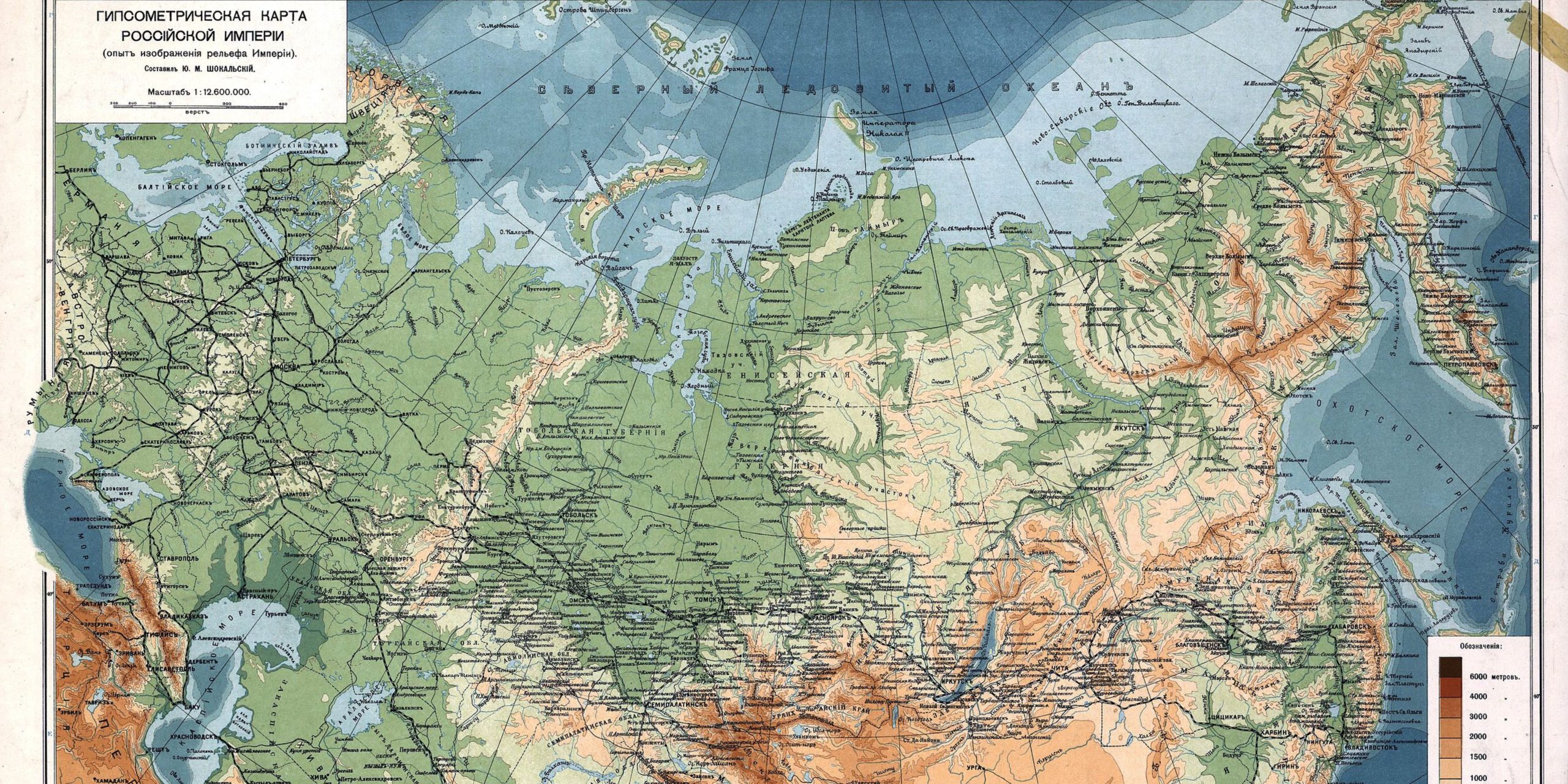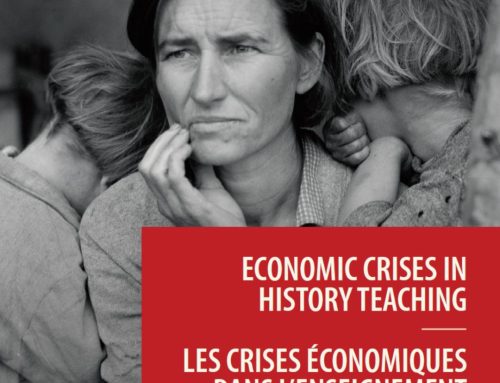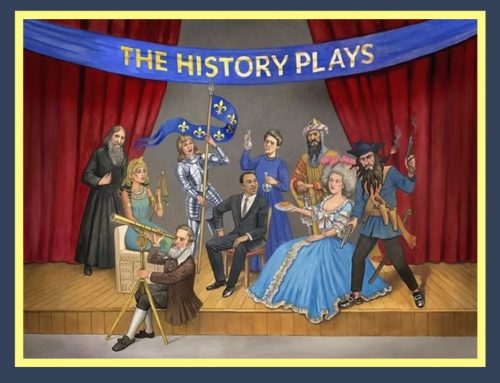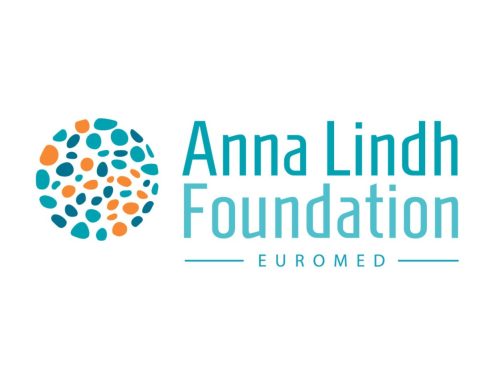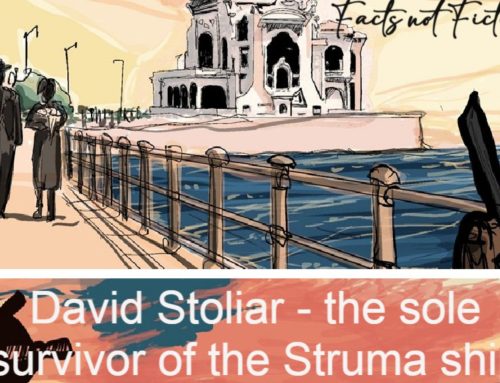Image: Map of the Russian Empire before 1914 (wikimedia commons / [St. Petersburg?] : Izdanīie. Pieriesielienčieskago Upravlienīja Glavn. Upr. Ziemlieustr. i Ziemlied., [1912?] (Piečat. v kartogr. zav. Tva A.F. Marks))
This article was researched during summer and autumn 2022 and reflects the situation in September of that year. How the invasion of Ukraine is dealt with in Russia and in Russian classrooms may have evolved significantly since. (1)
The start of a full-scale Russian invasion of Ukraine provoked in both countries broad public discussions about the history of relations of the two countries. The weapons in this war are not only guns and tanks, but also language, culture and history and identity.
There have already been calls from the Russian authorities to check Ukrainian history textbooks for ‘extremism’. (2) And recent reports indicate that there’s a directive from the authorities to minimize any mention of the role of Kyiv and Ukrainian territories in the development of the Russian state. (3) Also, on the part of individual officials, there have been calls for new textbooks that would mention a military campaign in Ukraine. (4)
The following material covers changes in history textbooks and curricula that have taken place from the beginning of the invasion in February 2022 until September 2022. The material is based on an analysis of the two most popular history textbooks in Russian schools, methodological materials used by history teachers, and two interviews with teachers who worked in Russian schools up to June 2022. The interviewees are currently out of the country and have agreed to talk on condition of anonymity.
History textbooks
Formally, Russian schools have relative freedom of curricula and teaching materials.
In reality, all textbooks in Russia are released as “lines of textbooks” – series of textbooks written by groups of authors for 5-9 and 10-11 grades, and published under the auspices of certain publishing houses. Each history textbook in the Russian Federation must be in compliance with the special document, named “Historical-cultural standard.”(5) Some other history textbooks, which are not being discussed in this material, are also compliant with this standard for history education and other federal requirements. (6)
The popularity of certain textbooks can be explained by the dynamic of relations between the state administration and publishing houses. All history textbook lines, approved by the Ministry of Education, are added to an official register, allowing their use in schools. All publishing houses are competing with each other to be included in that register, and the most powerful of them is “Prosveshchenie’ (7) (until 2011, a state run company and since in private hands). (8) The combination of administrative and business support allows Prosveschenye to promote its products among schools. Both textbooks mentioned in this article belong to this publishing house.
The first one is Torkunov’s textbook, (9) which is the most popular in Russian schools (as it is the prime product of Prosceschenya publishing house). It has been repeatedly analyzed by the scientific community and criticized for “returning to the language of the Cold War, emphasizing patriotism and national identity” (10) as well as for using heroic semantic constructions in relation to, in particular, Stalin and Putin. (11)
It is also worth noting that this textbook very briefly covers culture and life of the non-Russian peoples of Russia as well as the history of those peoples who were once part of the Russian Empire and the USSR. In relation to the territorial expansion of Russia, such terms as “discovery”, “accession”, “reunification”, “entry” and “request for entry” are commonly used. Such formulations are very vague and rarely reflect the real processes of Russia’s territorial expansion and its relations with these peoples.
Along with an attempt to promote the state point of view in textbooks in the past few years, the processes of filming patriotic films and organizing patriotic events have intensified. One of the main institutions that enforces this policy is the “Russian Military Historical Society (RMHS)”, created by presidential decree and run by former Minister of Culture (as well as the chief negotiator for Russia in the failed peace talks with Ukraine), Vladimir Medinsky.
Under the auspices of the RMHS, a new history textbook has recently been released, which is planned to be gradually introduced into schools. (12)
In the interviews with the author, one of the teachers comments that: “Medinsky’s textbook is quite good and balanced educational material, which tries to provide different points of view on the events of Russian history, however, the section on the period of the collapse of the Soviet Union and modernity differs sharply in tone and rather resembles a set of journalistic clichés of the modern media, but not an attempt of historical analysis”. Another teacher also notes that: “The textbook does not have a special approach to the interpretation of history, everything is like in Torkunov’s, but it is compiled better from a methodological point of view and it is much better to prepare students for exams”, but also notes the presence of “some strange religious and nationalistic moments”.
In conclusion, both scholarly research as well as testimonies from teachers indicate that the textbook materials are, at times, problematic and perpetuate the “official” Russo-centric narratives of the state, especially in its representation of contemporary history. However, one could argue that this situation is common for history textbooks in many countries and the Russian case is far from unique.
What changes can we expect in the future? In September 2022, the Minister of Education of Russia announced the development of new curricula for both Russian and world history in one course, as well as creation of a single standardized history textbook. This textbook will be financed from the state budget. (13)
However, the interviewed teacher doubts that in the near future the textbooks will be dramatically changed: “I’m not sure that the program will be rewritten and textbooks will be changed (only this year a new textbook edited by Medinsky was released and, of course, they didn’t know about the plans for a large-scale war). But they have not yet published a textbook for 11th grade, which is devoted to more modern events, and it is possible that it can be updated. It is quite possible that this position of the government will be conveyed in the form of “special teaching operation”: via thematic lessons, homerooms, etc.” (14)
Thematic lessons with students
With the start of full-scale hostilities, the Russian leadership needed to convey its position to a broader audience, including students. There is a reason to believe that in the future Russian authorities will continue to push the agenda justifying the war, not necessarily by textbook changes, but rather through further implementation of so-called thematic lessons and homerooms. Firstly, this is due to the fact that the development and implementation of new textbooks takes a lot of time, and secondly, because of the dynamic changes in the situation and uncertainty about the outcome of the war in Ukraine.
Below is a description of several such lessons from an interview with a teacher who was working at a school in Moscow at the time of the outbreak of the war:
“The first lesson was about justifying the war, the emphasis was on the fact that Russia is not to be blamed for the current situation, [but rather that] the Ukrainian authorities are to be blamed [as they] oppressed the Russian-speaking population, and then unleashed a war in the Donbas and Luhansk. So, Russia does not start a war, it finishes it. Deputy directors came to this lesson to observe the reaction of the children and the teachers. It was not possible to refuse to attend the lessons. The second lesson was devoted to the “brotherhood of the Slavs”. The whole lesson we had to convince [the pupils] that the Ukrainians and Belarusians are [our] fraternal peoples […], the proof of this was the non-Russian origin of many famous personalities, such as Gogol. The similarity of languages was also compared according to an absolutely flawed principle, with a comparative plate with simple, similar words from different Slavic languages. Words like mom, dad, school, cat. But these words are the same throughout the Indo-European language family… At the end, we had to ask the children questions such as: “Do you consider the Russian, Ukrainian and Belarusian peoples to be united?” But the question that angered the students the most was: “Do you think it is permissible to defend the unity of peoples by force in case of danger?” Then there were more lessons about the Anglo-Saxon world, about “fakes” (you need to believe only reliable sources, and this is the state media), about a hybrid war (an information war is being waged against Russia), about heroism (a story about modern heroes of Russia, where the ranks of pilots who landed a plane with failed engines and an officer who killed himself with a hand grenade, Magomed Gadzhimagomedov, (15) and other heroes of the “special military operation”).
Following the links below you can access the original materials for several of these lessons, which were sent to history teachers in Moscow Oblast:
1) Answers to difficult questions about Russia’s special military operation in Ukraine (in Russian)
Link to English version (note: Google translate!)
2) Conversation about the important matters (PPT, in Russian)
3) Information for the lesson “Events in Ukraine” (grades 9-11) (in Russian)
Link to English version (note: Google translate!)
Conclusions
Despite the statements of individual Russian officials, we should not expect serious changes in the methodology and teaching materials of history school programs. The situation is developing dynamically and the formation of an integral idea of the conflict by the state is not yet possible. Moreover, current history textbooks have already been sufficiently adjusted in such a way that “thematic lessons” and homerooms are well correlated with their content. They have the same factual tropes (such as “fraternal peoples”, “reunification of Ukraine with Russia”) and semiotic devices (praise of “heroes and defenders of the fatherland”) that are perpetuated in these sessions with students.
However, in the long term, there is a possibility of deeper changes in both the curriculum and textbooks. Most likely, this will affect the period from 1991 to the present day, continuing a tendency towards the ideologization of educational materials of this period. Ultimately, the trend towards the unification of teaching programs and strengthening of state control over the curricula is a huge impediment towards development of critical historical thinking of Russian students. It limits the ability to perceive and analyze different perspectives and makes it impossible to approach information critically.
Written by Ilia Liapin, former EuroClio trainee (2022).
(1) This article was written during summer and autumn 2022 and was researched with interviews with teachers on the condition of anonymity.
(2) Бастрыкин поручил проанализировать украинские учебники по истории. Izvestya: https://iz.ru/1313217/2022-03-30/bastrykin-poruchil-proanalizirovat-ukrainskie-uchebniki-po-istorii
(3) «Перед нами задача — сделать так, будто Украины просто нет». Из учебников издательства «Просвещение» убирают упоминания Киева и Украины. Mediazona: https://zona.media/article/2022/04/23/enlightenment/
(4) В российские учебники истории добавят главы о войне в Украине. Siberia.Realii: https://www.sibreal.org/a/v-rossiyskie-uchebniki-istorii-dobavyat-glavy-o-voyne-v-ukraine/32011039.html
(5) Историко-культурный стандарт: что изменилось в 2020 году https://xn—-dtbhthpdbkkaet.xn--p1ai/articles/191231/
(6) For more on textbooks in Russia, see article on EuroClio’s visit to the independent Russian publishing house Russkoe Slovo in October 2021, https://euroclio.eu/2021/12/03/history-textbooks-in-moscow-a-visit-to-russkoe-slovo-an-independent-publishing-house-in-russia/
(7) “Prosveshcheniye”, https://prosv.ru/eng
(8) Крупнейший издатель учебников вернулся к планам провести IPO https://www.rbc.ru/technology_and_media/26/11/2021/619e5c519a7947304ca527ea
(9) История России под ред. Торкунова. 10 класс: https://drive.google.com/file/d/1OIaKLR-yPnsiAWrQvPsVn-vQOTMzM6P1/view?usp=sharing
(10) Zajda, Joseph (2015). Globalisation, Ideology and Politics of Education Reforms || Patriotism, History Teaching, and History Textbooks in Russia: What Was Old Is New Again. https://sci-hub.hkvisa.net/10.1007/978-3-319-19506-3_4
(11) obid.
(12)История России под ред.Мединского. 10 класс: https://drive.google.com/file/d/1pLgPLkNpzGm6WndeFjVPXMf6pmt_eYK6/view?usp=sharing
(13) https://ria.ru/20220916/uchebnik-1817220528.html
(14) Homeroom period in Russian schools is called “klassny chas” (literally, “class hour” as usually it’s one academic hour long). Each class is around 20–30 people; each class gets a “klassny rukovoditel” (literally “class supervisor”), that stays with them from the 1st till 4th grade. Then they move to a 5th grade and get a class supervisor who looks over them until they finish school. This class supervisor schedules the homeroom period “klassny chas” approximately once a week and uses it to make announcements and talk about their behaviour and marks (https://en.wikipedia.org/wiki/Homeroom#Russia)
(15) https://www.mk.ru/social/2022/03/05/pogibshiy-na-ukraine-nurmagomed-gadzhimagomedov-videl-novorozhdennuyu-doch-tolko-na-foto.html

